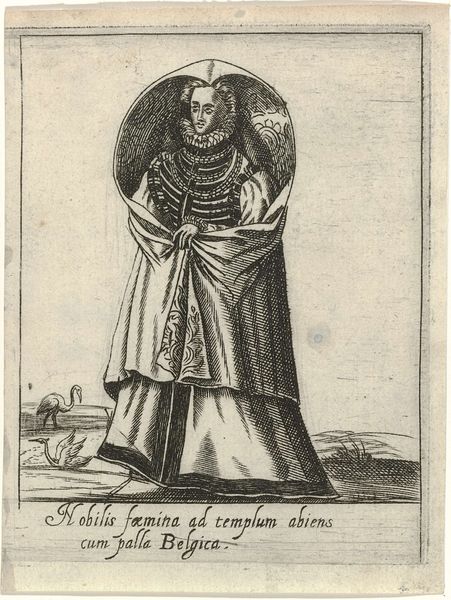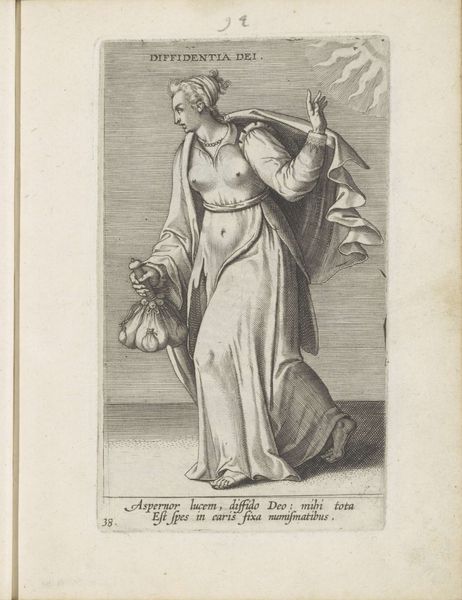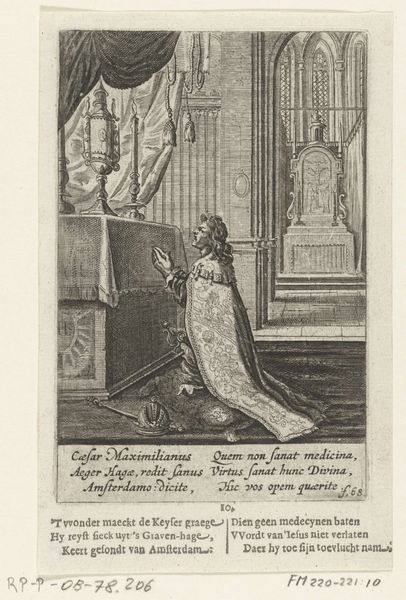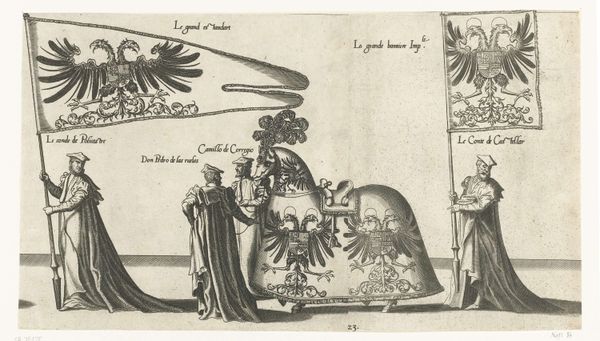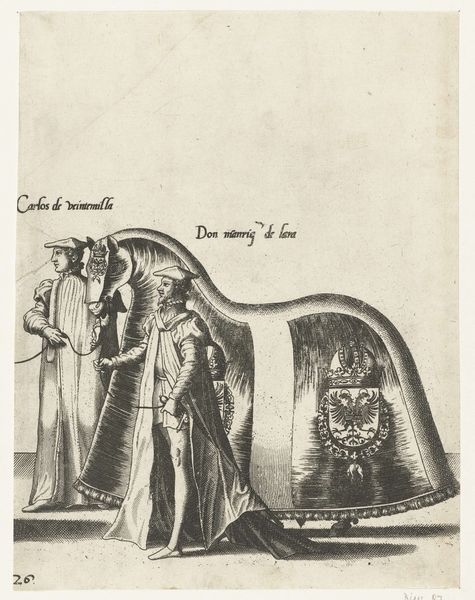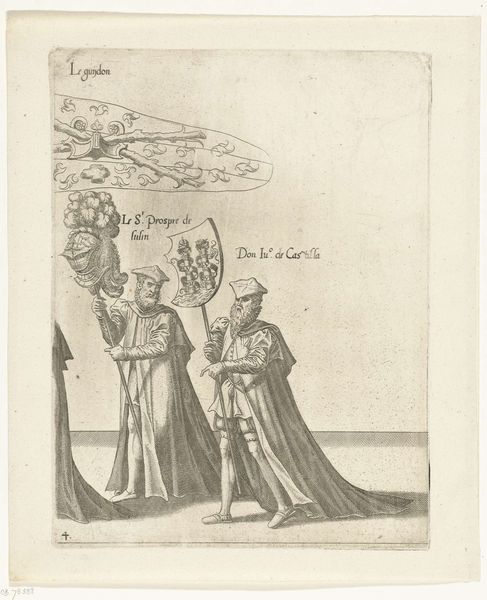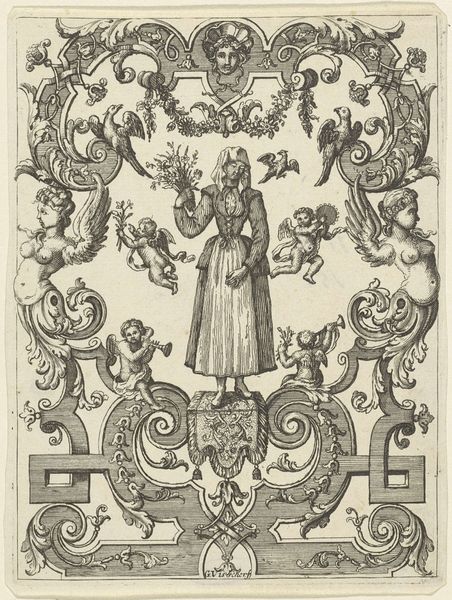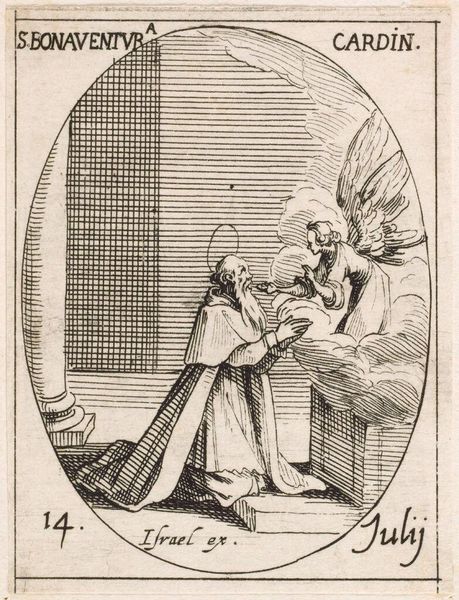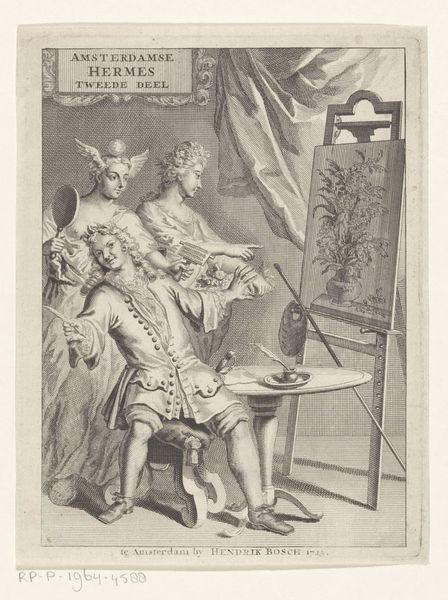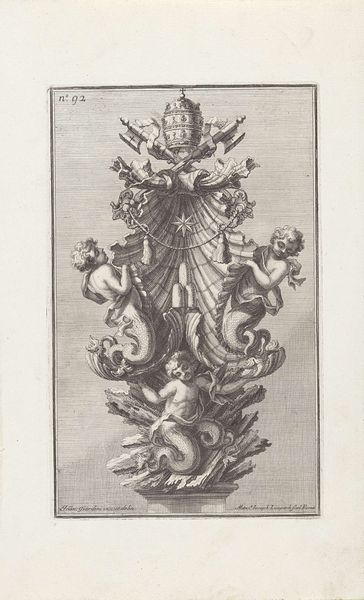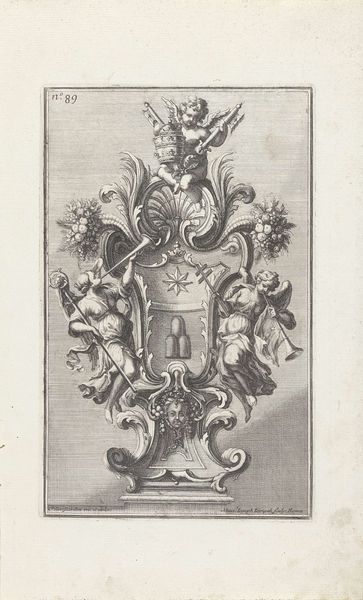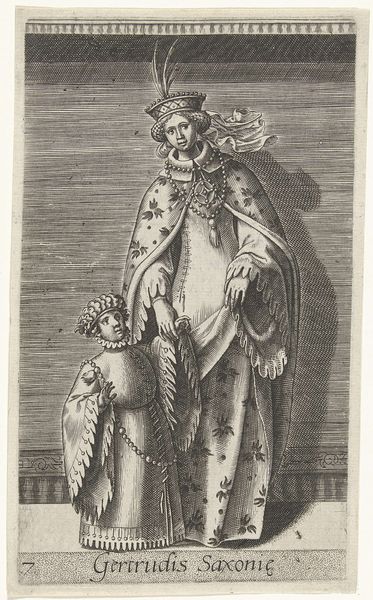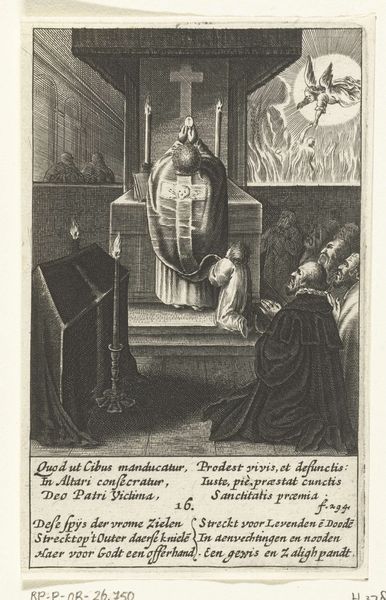
print, engraving
#
narrative-art
# print
#
old engraving style
#
figuration
#
line
#
history-painting
#
academic-art
#
engraving
Dimensions: height 250 mm, width 168 mm
Copyright: Rijks Museum: Open Domain
Curator: This is "Part of the Procession, no. 23," an engraving dating from 1559 to 1619, attributed to Joannes van Doetechum the Elder. What catches your eye here? Editor: That imposing double-headed eagle! It just dominates everything. I'm immediately drawn to its heraldic symbolism, the weight of empire pressing down on the figures beneath it. Curator: Exactly. Doetechum, masterful as always, captured a particular kind of civic pageantry in this line engraving. Note the almost photographic precision in the rendering of fabrics, specifically in that train—imagine all those folds! Editor: Absolutely. The garments suggest immense authority. It seems designed to evoke a specific feeling, though I am wondering what occasion demanded so much solemnity. And two eagles instead of one? Curator: Indeed. Double-headed eagles represented imperial authority, claiming domains to both east and west. In a parade setting, these banners acted almost like spiritual advertisements; memory aids that grounded power structures in tangible iconography for people observing. Editor: A symbolic reinforcement. Seeing it displayed like this makes me realize its almost primal impact – the eagle embodies ideas of might, watchfulness, and perhaps, even a touch of threat. You couldn’t miss it if you tried! What I see within it is that blend of aspiration and anxiety which is everpresent at the crossroads of history. Curator: Very well expressed, it is hard not to sense that duality of emotions given what has been committed for power through history. Joannes was quite clever because I imagine many could feel many sentiments, some mixed, given all he packed into a relatively straightforward image. Editor: I couldn't agree more. It’s interesting to think how artists and iconographers such as him were not only documenters, but potent orchestrators of public emotion through visual vocabulary. Curator: True—artists always act as transformers who shape culture and perception in profound ways. "Part of the Procession" is much more than simply an historical snapshot; its echoes persist.
Comments
No comments
Be the first to comment and join the conversation on the ultimate creative platform.
